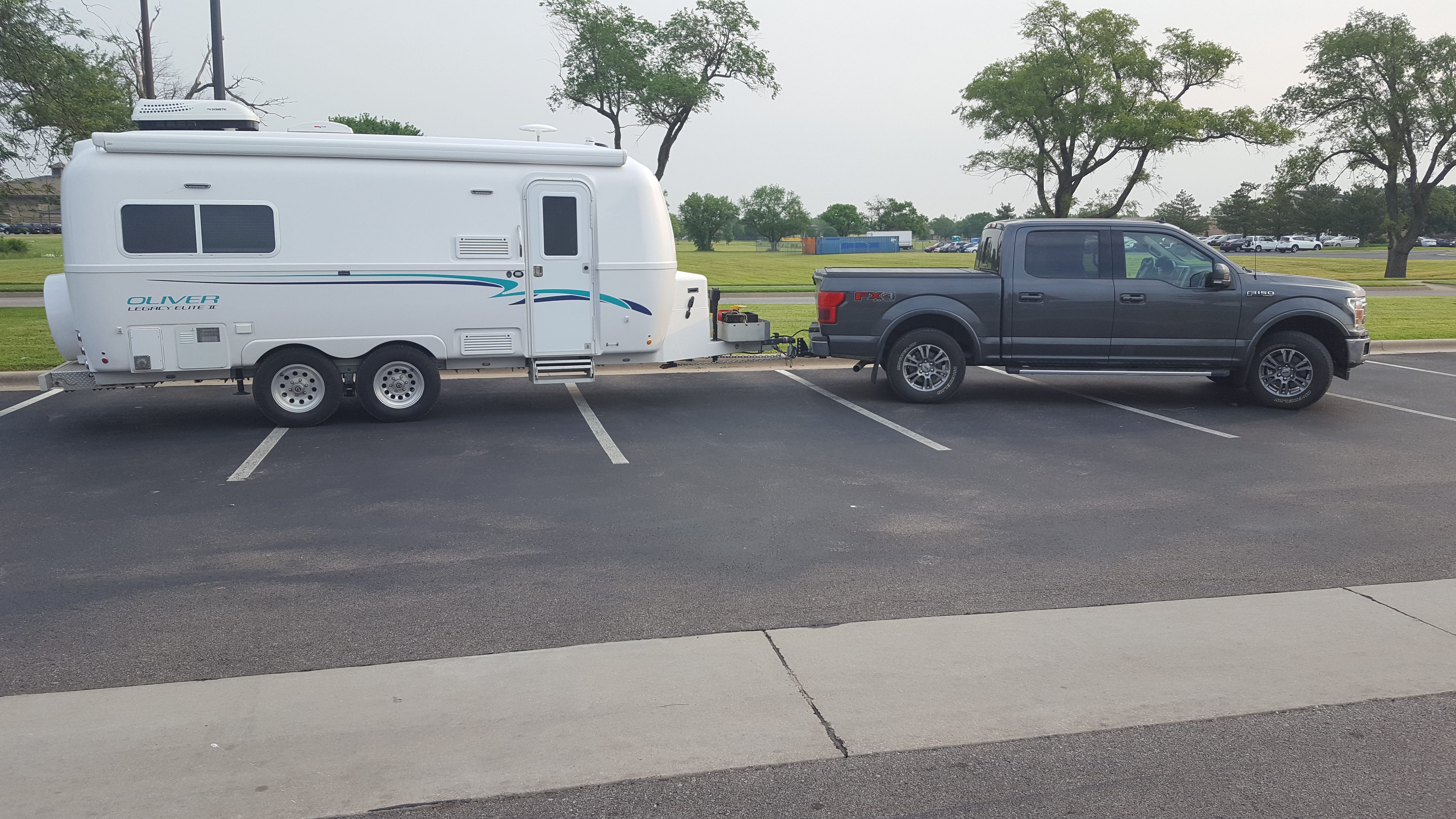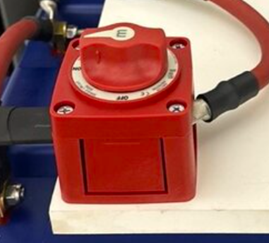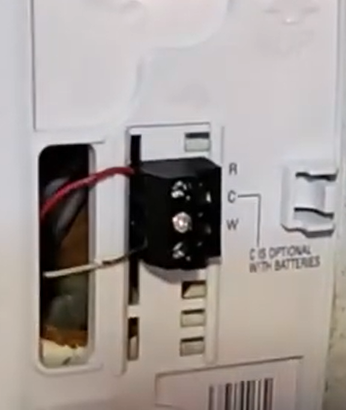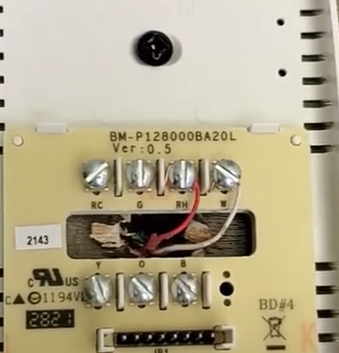-
Posts
1,589 -
Joined
-
Last visited
-
Days Won
40
Everything posted by Geronimo John
-

First highway roadtrip with Atmos 4.4 => MI to TN
Geronimo John replied to rideadeuce's topic in Ollie Modifications
Agree. I wonder how much this tall unit and base adds to the standard height of the trailer. For some this could be an issue as well. -
The L&L head opens the jaws to allow for much easier placement and removal. It also grabbs on better allowing you to "FORCE" grease into the wet bolt. It certainly makes greasing much more efficient with a lot less waste. I know it is expensive, and I "resisted" for years. But after using one of my friends.... I was sold. No regrets. GJ
-
One of the best investments I have made is the Lock-N-Lube grease gun head. It works wonderfully and eliminated the forces that break zerks. Highly Recommend! GJ
-

Made in USA leaf springs
Geronimo John replied to Mountainman198's topic in Mechanical & Technical Tips
Agree! Be sure to re-torque after road miles as suggested by MaxBurner and others. It is normal for the U-bolts to strech. Mine got an additional 1/2 turn on the first re-torque and a 1/4 turn on the second. Will check one more time in 500 miles and suspect it will be nill. GJ -

Made in USA leaf springs
Geronimo John replied to Mountainman198's topic in Mechanical & Technical Tips
I suspect that they could. But as you noted, I too am wondering. Their, and about all 5 leaf springs are made for stiffness by the extra leaf. The weight of the steel is a good indicator of the weight bearing capacity. The initial ALCANers were asking for a 2,000 pounder and were mis-informed as to the true capacity and stiffness of their product. When I saw the ratings jump of almost a thousand pounds per leaf (1750 to 2700) my red flags went up. That's how I got to the Dexter capacity upgrade of the PB4 from the PB4B. One thing to keep in mind is that ALCAN's speciality is off road applications. Their focus is not on an easy ride for the load, but surviving punishing situtations encounted by the Baja and Mountain Racers and those inspiring to be. Hence their recommendation. Per several experts that I trust, this is way over-sprung for general use for the majority of the OE2 Fleet. But on the other side of the coin, it may be a good choice for those super heavy or more serious off road users, Expecially if they have experienced whitness marks from banging of the axle U-bolts against the subframe. Those owners need a 5 leaf. Point is this is not a good/bad discussion. It is all about each owner's trailer weight and use. GJ -

Made in USA leaf springs
Geronimo John replied to Mountainman198's topic in Mechanical & Technical Tips
I agree and have previously posted that DIY spring changes on the road is NOT something to even consider doing. However, as also previously posted, I woud NEVER suggest replacing the 1750 springs in kind. Not enough steel. For some the ALCON 2700 springs are an option. But also for others who want a more compliant but stronger spring, the logical alternatve is the Dexter 2400 pound PB4 springs. Always be aware that spring sizing can be too little or be "over sprung". Changing from 1750 to 2700 springs is a huge difference. Some at OTT have confidentially stated that they are a bit too "over sprung". But if your trailer is really heavy or your are a near full time boondocker then they likely would fill the bill well. GJ -
Zooming in on this thought. The jacks are a standard jack which is modified by Barker for OTT. Their standard jack has a round mounting plate with three bolts. OTT production makes and sends Barker a two bolt tab that Barker welds to the shank of their standard jack. Production ordered out 48 of them in May and according to Service they are out of stock. I find this to be a bit off. More likely the Production Team is holding on to their remaining supply of "Post Assemblies" for..... wait for it... production. In the last week, at least four ownes have needed these assemblies and per Service have called Barker. But Barker does not have any of the mounting tabs so those owners are basically screwed. As of yesterday, Barker has no pending orders from OTT, and none will be made until OTT makes the brackes. OTT Service needs a reserve stock in addition to Production stock. Until this is done, if you drive away with a down jack, you likely will be "Screwed". The three jacks are rated for 9,000 pounds total. The safety factor for a screw jack is generally considered to be 3, but this may need to be adjusted for specific applications. For example, if a screw jack failure could injure people, some recommend multiplying the critical load by an additional factor of 0.6, resulting in a final safety factor of 5, Since the failure of these jacks could kill, the 5X safety factor is in play. Bottom line these jacks are the right jacks for our trailers. JD: Can you please post a link to your excellent DIY guide for jack maintenance? AMEN! Note that the jacks have a clutch that protects them from over extension/retraction. If you damage the jack by driving off with it down, the bent section will prevent the jack from moving when you try to retract it. That's when most blow the 30 amp fuse.
-

The Saga of corroded brake wires on older trailers
Geronimo John replied to Wayfinder's topic in Mechanical & Technical Tips
JD: One of the reasons that JD suggested the exterior routing acrosss the axle is that the wires were being damaged at the entry and exit points. I totally agree that the wires should be 14 ga as you suggested. -

Made in USA leaf springs
Geronimo John replied to Mountainman198's topic in Mechanical & Technical Tips
Dexter P/n PR4, 2400 pound rated. Also order brass/bronze bushings and new U=bolts. Their PR4A is the OTT OEM 1750 pound ratged. For those late to this topic, please do NOT replace your springs with the OTT OEM 1750 rated ones. GJ -

Made in USA leaf springs
Geronimo John replied to Mountainman198's topic in Mechanical & Technical Tips
Last week I changed out my Dexter OEM 1750 pound springs and installed new Dexter four leaf 2400 pounders. The process was not all that complex, but it is tedious and liketly will take the average owner more than a day, unless you have access to heavy duty tools and floor jacks. This process is not one that I would never try to even contemplate doing on the side of the road or even at a rest stop. I put a thousand miles on the trailer with the new springs and the wheels did not fall off. I strongly encourage all OTT owners of any trailer over a handfull of years use to inspect their trailer springs. They should be the shape of an ole style long bow, with ends that curve; not straight. If yours do not bunb all the way to the end, they are in the process of failing. If so, see the above paragraph and read it again. Repeat as many timess as necessary. 🙂 GJ -

Main Battery Disconnect Install
Geronimo John replied to Boilermaker Chemist's topic in Ollie Modifications
Another caution: Different hulls have different dimensions, trays, and batteries, Hence one pic may not work for all as our stack heights vary. On my 2018 with 100 AH batteries I could not use such a thick cutting board. Check yours before purchase is a good plan. GJ -

Houghton Retrofit Process & Questions
Geronimo John replied to Geronimo John's topic in Mechanical & Technical Tips
Update: July 13, 2024 I completed the Houghton 3400 “Humidity Mod” as presented in the attached "Wiring Modification for Interior Fan" document. This excellent write-up was provided by GSM Bear, Version 2 and posted 7/30/2023. His document needs to be fully understood before starting this Mod. It took me about 2 hours working off a ladder on the curb side to carefully complete the mod. Suggestions: The suggested wire measurements are adequate and allow for re-termination if necessary. No need to add any extra length. I recommend that you prefabricate the new brown, black, and white wires. Much easier to do so on your bench vs. on the roof. Then physically plug them into the relay. One less thing to worry about when on the ladder. You will need all the “Parts and Tools Needed” as listed by GSMBear. Additional Tools and Supplied I Found Useful: Ladder Head lamp Wire cutter Magnet on a stick Large Phillips bit Silicone to reseal the electrical box Needle nosed & regular pliers Camera (I took pictures to allow me to “blow up” to get a closer look into the electrical box connections.) Mod Results: The Houghton ran as expected as the fan shut down with the compressor when it cycled down to low speed (Fan set to auto). Houghton also worked as expected with the fan set to low speed. This is the ultra good dehumidifying and quietest setting. Significantly lowered the humidity levels in the cabin. I had to set the remote temperature to a MUCH lower setting to get the cabin to a cool level. The unit Cycle time was significantly extended with the mod. As in extended way too infrequently. I believe that at the end of a compressor run, the fan shuts down with the overhead super cold coils, The coils then chill the air in the unit and being heavier it sinks down past the thermistor. As a result, the process keeps the thermistor “Chilled”. This delays the restart longer than desired. Moving the thermister to a location outside of the unit is needed Hence, the Thermistor Mod is required, as GSMBear states in his document. More to follow with completion of the Thermistor Mod in the next day or two. GJ GSM BEAR V2 RecPro Houghton Interior Fan Mod v2.pdf -

Finally! My Batteries and Inverter Now Run My AC!
Geronimo John replied to Spike's topic in Ollie Modifications
Thanks for the segway JD! I completed the Houghton Humidity Mod (Install Relay) yesterday. Phase II is to do the thermistor relocation mod, Should have it done in the next day or so. Both are required as GSMBear stated in his July 2023 posting. I'll be posting on what I learnd and thoughts on the Houghton Thread. GJ -
Here are the ones I have. Hope it helps. BOM - Baker VIP 3000 Power Jack Parts List.docxOM - Barker VIP Power Jack 3000 Manual.pdf
-
I have seen many variants of home made Sheep Camp units in Utah and some in Colorado. They are not designed for extensive high way use. Most are hauled up the mountain and then moved a short distance to the next grazing field. Then the next year towed back to the first location. These however are way nicer than what the sheep herders I have seen using.
-
I would bet that the vast majority of the 415,800 HVAC tech's would not support automatic replacement of an broke HVAC unit. I would also bet that the the few who agree are likely sales staff...... 🙂 GJ **************************** how many AC repair techs are in USA According to the Bureau of Labor Statistics, the number of technicians employed in the heating and refrigeration sector in the US rose between 2021 and 2022. According to the US Bureau of Labor Statistics, 415,800 heating, air conditioning, and refrigeration mechanics and installers were employed in the US in 2022.
-

Houghton AC-installing a Honeywell PRO 1000 Thermostat
Geronimo John replied to Nan's topic in General Discussion
Follow-up: For your Honeywell 1000 Pro: hook up the two sets to the Red and White terminals: For the Emerson Heat Only you remove the jumper wire and use the W and the RH terminals. Connect one set of two wires to each. Done. -

Houghton AC-installing a Honeywell PRO 1000 Thermostat
Geronimo John replied to Nan's topic in General Discussion
Nan: When upgrading from the Dometic to Houghton A/C, the digital Dometic T-stat cannot easily be used. As such, the Suburban Heater will require a means to turn on/off and modulate temperature. An easy way to do this is to install a Heat Only T-stat. Several owners have used this process and it works. Most importantly you don’t need to be fishing wires thru the hull to do so. Heat only T-stats typically have 4 terminals. They have a temperature sensing element that opens or closes based upon temp for the heater. This “switch” is connected to two of the terminals. The onboard batteries of the T-stat powers its lights and control board. Two are needed for the Heat Only function. For the heat side of the T-stat you will need a power in (all the time) and a power out only when you have switched the T-stat on and it is below your set point. In most of our OTT's, the power in (+) is provide by the furnace which has a transformer for its controls. They have tapped the + side and sent them “TO” and “BACK from the Dometic via a pair of wires between the hulls up the curb side, over the roof to the A/C 14” X 14” roof penetration. To mount the Houghton, you disconnected them where they enter this roof penetration. The Dometic also uses the 12V + from the heater transformer to operate. The Dometic communicates with their transformer digitally. It uses a four-wire cable with very small wires from their onboard circuit board to its digital T-stat. It has four wires as I recall and with them it controls fan speed, mode (AC/Heat/Fan) and temp control. But these 4 wires individually are too small to carry the load from the heater all the way to the Dometic T-stat location AND back to the furnace. BUT... If you double up the four small Dometic digital wires into two each two pair they make circuit that will control the furnace when the T-state says to do so. So, that's how it works. Now you just need to connect the paired wires to the new thermostat. For that see the next post: -
Wow that's STEM at work for sure. Riveting video. thanks for sharing. Watched very second. Thank for sharing! GJ GJ
-
I suspect that they have are looking at their growth rate projections. Better to have such a plan to first serve their existing customers. Then as the rest of their satelits get boosted to space, they will have the ability to support many more customers. Then hopefully a plan similar to the Garmin Sat Trackers would be offered. Basically an annual fee for all and then tiers of levels of service which can start/stop monthly if desired. Such a plan would be great for RV use. This thread was a head turner for me. Thanks for posting David and all for the update.
-
The flaw in much of the above opinions is assuming that the A/C unit will remain on high fan. In reality if you arrive at a hot trailer you want the unit to run on high fan (To drop temperature) and then as the temperature falls, the have the unit automatically cycle the fan down to a low speeds. Granted it will not get the humidity as low as a perfectly right sized unit that runs 24/7 can. But it certainly is the best control path for the vast majority of users. This is precisely how, and why, most vehicle A/C systems are designed. I agree that a smaller unit can dehumidify better than a larger one. Also that a larger one can cool down a hot trailer faster. But to say which is better is a fallacy. Why? It depends: If we stay in our trailer all day and are using shore power: I would buy the smaller sized unit to run 24/7. If we are in hot and/or humid conditions, and are not in the trailer all day, especially without shore power, the bigger unit has the edge because you have a LOT of latent heat to dissipate. Sort of like the "Spring Fiasco", the right decision absolutely depends on how YOU use YOUR rig. There is no one right answer that fits all situations for this topic as well. In my case, I want the quietest unit available. I want high capacity as we are a "Type 2" customer. For those reasons the Houghton 13.5 was my pick. I went into the purchase knowing that a simple relay would fix the continuous running fan problem and suspecting that moving the thermistor would fix the cycling issue. But I'm a DIY guy and can fix them. I'm not going to trumpet the Houghton for most owners as that is not something that many could or would not want to take on. Also, until I have personally executed the two mods I have no real world basis to report their success or failure. If the Mods work, as my 50 years as a M.E. tells me they will, then that is a different situation. Just have to get to my rig in July to make it happen. I believe that making changes to our OE2's needs to be done cautiously and with study. If you have the luxury of time, I would not be buying an A/C just yet. Let the pioneer DIYers do their thing and report back in the Fall their real world experiences for how they used their trailers and how their A/C performed. Also let the new guys on the block get an opportunity to find the bugs in their units as well. GJ
-
Looks like you are back to what TopGun2 suggested. You would want to let the test run for several days, starting with a full SOC at the beginning. True your SOC indicator reading would no longer be valid, but at least you could get a voltage delta from the terminals. It should be VERY close to .1V or so. If it is higher, then using a Litho chart will let you wag the SOC change. Not real accurate, but if the voltages effectively do not change, then you know for sure it is not battery internal energy consumption to heat. GJ
-
For someone that's not a DIY capable, then there is some reduced value for the wiring that is no longer provided on all newer trailers. Older ones have wiring between the solar entry (Hidden in front of the Max Fan) run between the hulls over the roof to the street side storage area. But I seriously doubt that OTT would have also eliminated the pathway to do so. Why? Service still needs it when an owner wants to add solar. Also, more than a few owners have run electrical wiring between the hulls for varius purposes in several places. I'll be posting on this topic after I do just such a run this summer for a Houghton mod GJ







